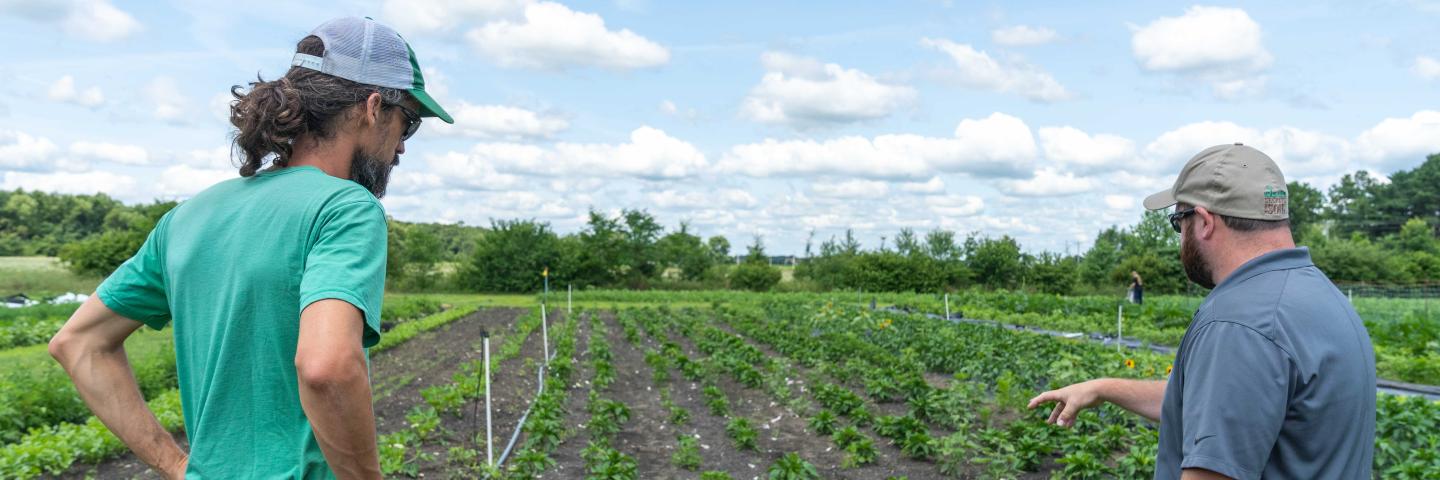Ask the Indiana NRCS Expert: Urban Agriculture

As farmers in Indiana and nationwide look for ways to produce locally grown food in urban areas, experts from Indiana NRCS are here to help this growing group of urban farmers address conservation issues on their farm.
How does the Natural Resources Conservation Service (NRCS) work with urban/small farms?
The NRCS provides technical assistance that can help urban farms identify natural resource challenges associated with growing crops. This could include identifying the need for soil testing to assess soil nutrient levels, selecting an area of the farm for pollinator habitat or other concerns. Each farm is unique — operators, experience, products grown, soils, business plans and other resource challenges — and each should be assessed accordingly. The NRCS works closely with our partners at Purdue Extension, the Indiana Association of Soil and Water Conservation Districts and many others to meet the unique needs on these farms.
What can NRCS programs provide for urban farmers?
In addition to the technical assistance NRCS provides, financial assistance is also available through the Environmental Quality Incentives Program (EQIP) and Conservation Stewardship Program (CSP) to help urban farmers address natural resource concerns such as reducing erosion, building soil health, establishing pollinator habitat and with practices such as cover crops and high tunnels. CSP can provide annual payments to producers to continue with a minimum level of conservation and enhance their conservation system.
Who is eligible for USDA Programs?
Applicants must:
- Control or own eligible land
- Comply with adjusted gross income limitation (AGI) provisions
- Be in compliance with the highly erodible land and wetland conservation requirements.
- Develop a conservation plan
Additional restrictions and program requirements may apply.
How do I apply for financial assistance?
Contact your local USDA Service Center or you can apply through Farmers.gov. The local district conservationist can help guide you through the application process, including the steps necessary to establish eligibility for USDA programs. NRCS programs are competitive meaning only a limited amount of funding is available. Applications are ranked and selected for funding based on those that provide the most environmental benefit. Through Farmers.gov, you may find other USDA program assistance through the Farm Service Agency such as access to farm loans.
If my application is funded, what is covered and what are the requirements?
Your local district conservationist will assist you with developing a conservation plan to identify the resource concerns on your farm and conservation practices that can help address those concerns. You may choose to include any or all practices identified in your plan for financial assistance. EQIP financial assistance includes flat rate payments for each eligible conservation practice. Check out the EQIP web page for a list of the eligible practices, payment rates, and specific requirements. In general, if your application is funded, you will be expected to carry out the practices you selected according to the schedule in the contract. You will be reimbursed after you complete a practice and NRCS determines that it meets our technical specifications.
You mentioned high tunnels, what are they?
They are an enclosed structure used to cover and protect crops grown in the natural soil profile from the weather, similar to a greenhouse, however they are cheaper and moveable.
What are some of the benefits of adding a high tunnel to my farm?
In Indiana, most produce crops can be grown without the need for a high tunnel. However, high tunnels can extend both the early and late growing seasons. Also, compared to a greenhouse, they are relatively inexpensive and moveable.
What are some things that I should pay attention to if I plan to install a high tunnel?
Select the best location on your property — beware of trees and be sure to consider drainage and potential wind damage. Another often overlooked concern is that of soil health under the high tunnel.
How can a high tunnel impact soil health?
The soils in a high tunnel are often highly worked and watered for the various crops. The more frequently the soil is worked or tilled, the faster soil loses its structure and organic matter. Soil structure impacts water infiltration and organic matter is important for soil productivity. Adding crop rotations and/or cover crops can help.


